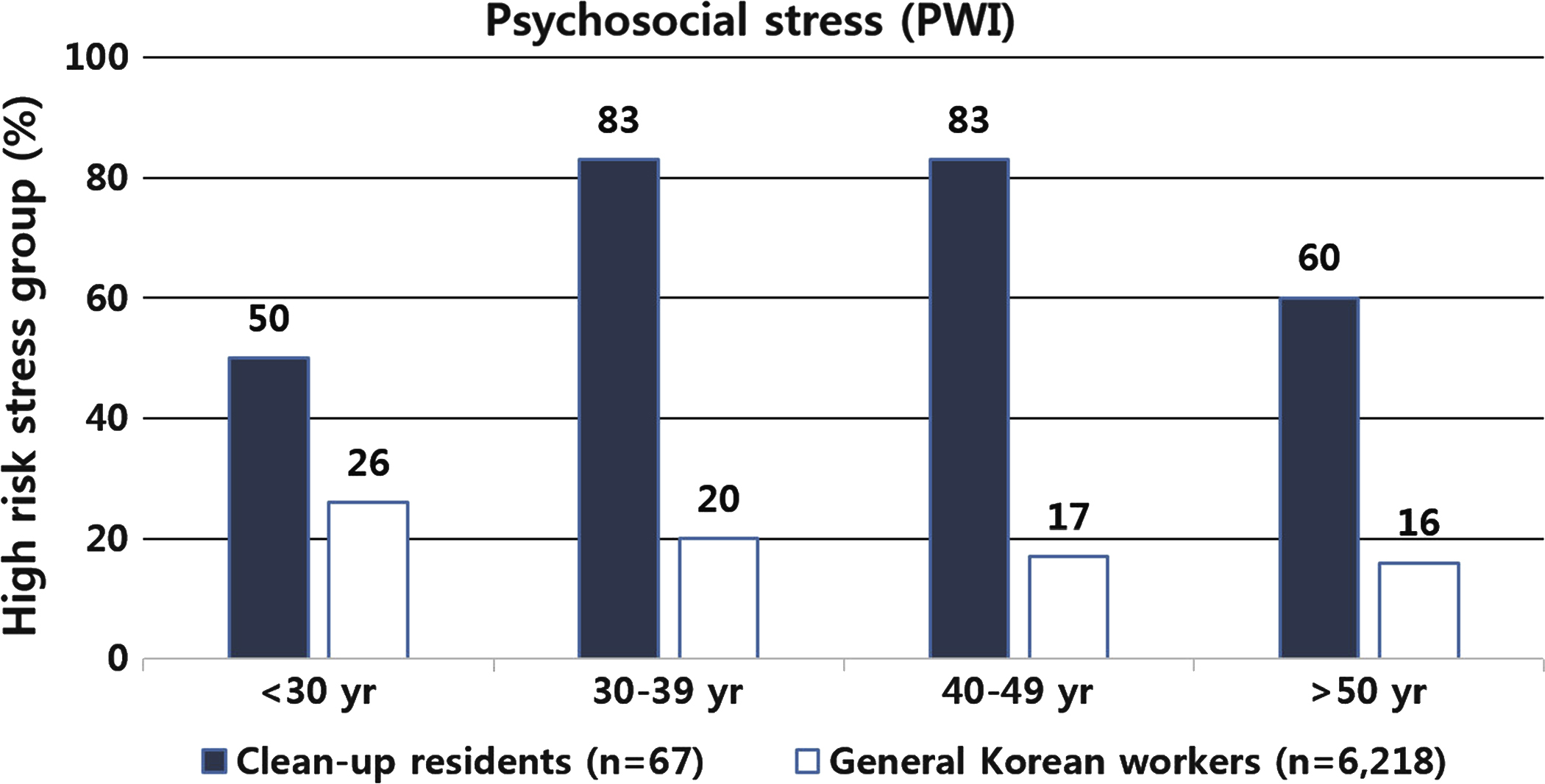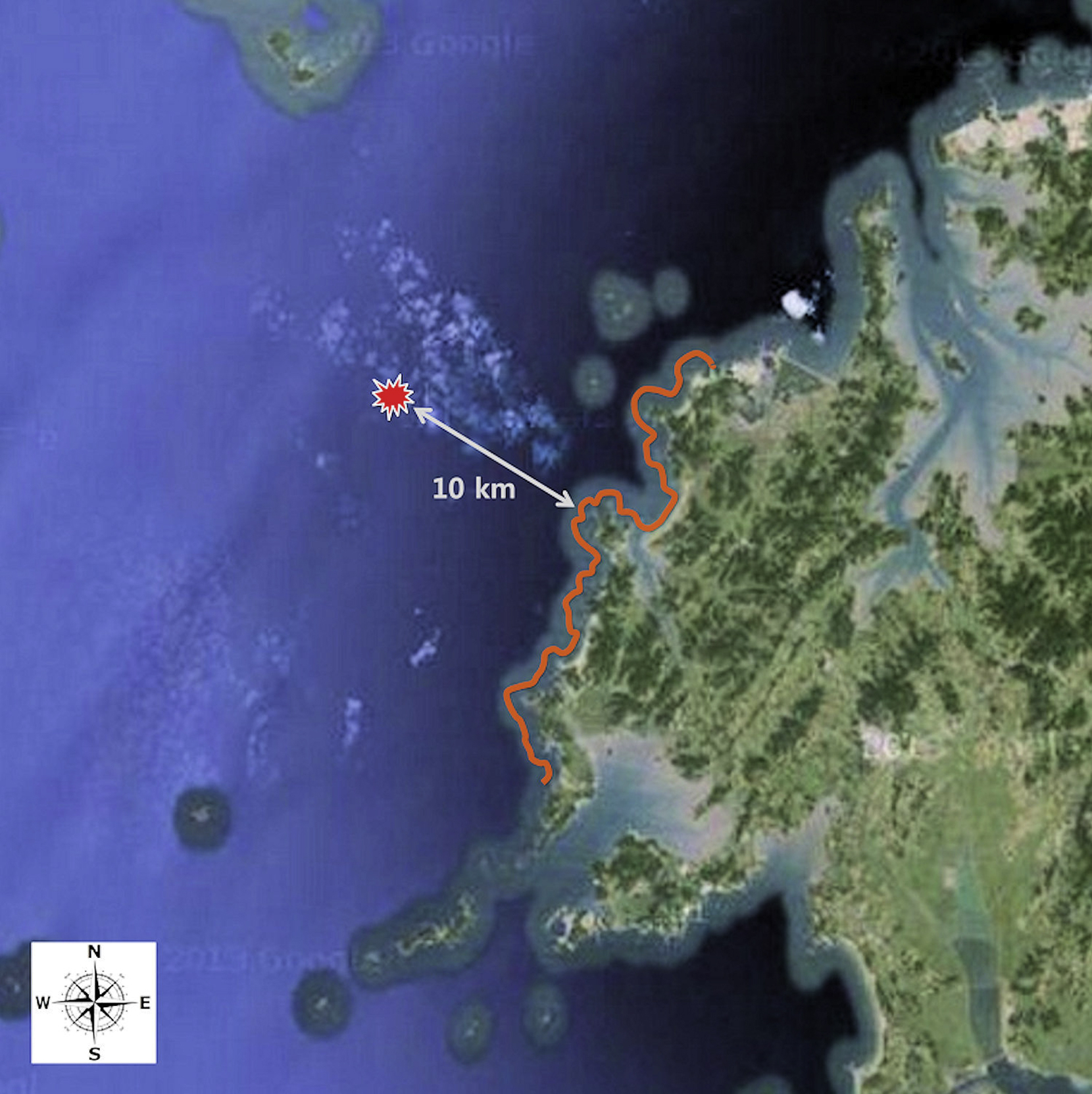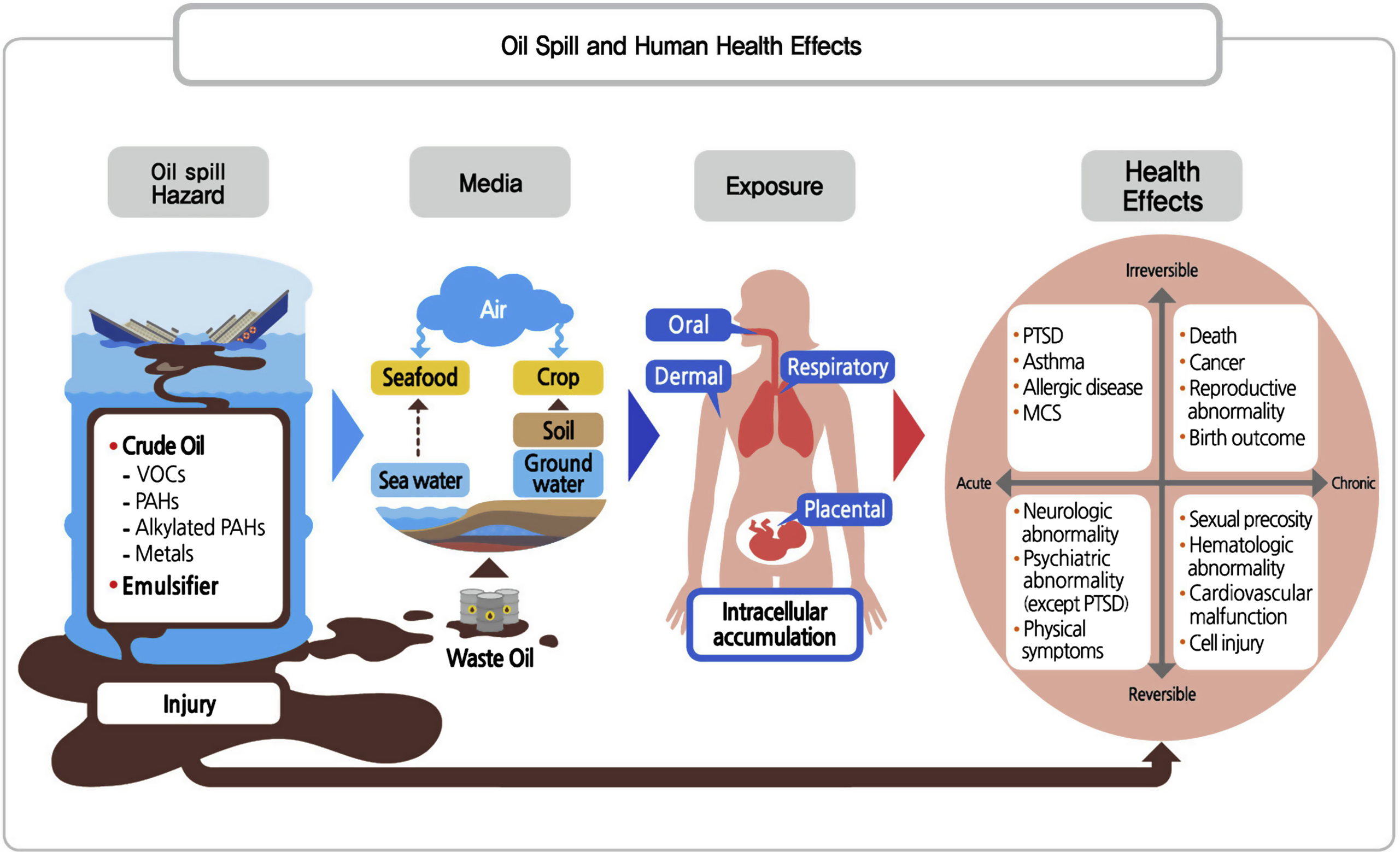Health Aspects of the Hebei Spirit Oil Spill
Abstract
The oil spill that occurred in Taean on December 7, 2007, was the largest oil spill ever in Korean waters. This accident took place close to residential areas, and as a result, it affected the physical and psychological health of the residents. An extensive health survey was conducted on local residents, volunteers, and military personnel immediately after the accident. The results showed that the oil spill increased the physical symptom prevalence, depression, suicidal impulse and psycho-social stress of residents. Consequently, a long-term follow-up survey on the health of local residents was suggested, and in response, the Korean Ministry of Environment (MOE) designated Taean Environmental Health Center (TEHC) as the agency in-charge for the task and ordered a medium-to long-term health survey. TEHC is monitoring the adults and children in the oil spill disaster area. In addition, the center is also engaged in studying prevention and the health effects of the oil spill, establishing a biospecimen bank and database, providing medical services and health consultations, providing education and health promotion programs, and alerting the international community on the study of health effects from oil contamination. Since the first survey in 2009, health surveys of adults and children have been conducted biennially, and as of February 2016, a total of approximately 16,000 people (approximately 12,460 adults and 3580 children) had participated in the surveys. In addition to this, a survey is also being conducted on the health effects of the oil spill on pregnant women and infants. The health survey included questionnaires, health examinations, and specialized tests, which were used to assess how health status is affected by oil spill exposure levels. This was performed by analyzing the concentrations of heavy metals, volatile organic compounds, and polycyclic aromatic hydrocarbons, along with oxidative damage index through biomarkers. Health education, laughter therapy, nutrition education, and prescribed exercise are being conducted for adults, while “Health Nanuri (sharing) Camp” is being conducted for children. Along with the continued health monitoring of Taean residents, future plans include concentrated efforts in the area of follow-up surveys of volunteers who participated in the cleanup activities at the initial stage of the accident, mechanistic studies on the health effects of oil exposure through toxicology and genetic studies, in-depth studies linked to other ecotoxicological studies, sharing of health study results through international cooperation, and expert training.
Keywords
19.1. Introduction
19.1.1. Background
19.1.2. Toxicity and Health Effects of the Oil Spill
Table 19.1
Number of Cleanup Work Participants in Hebei Spirit Oil Spill, 2007, Taean, Korea (as of July 4, 2008)
| Participants | Summation of Daily Participants (%) |
| Residents | 5,56,343 (26.2) |
| Volunteers | 12,26,730 (57.8) |
| Military personals | 1,52,695 (7.2) |
| Public officers | 76,684 (3.6) |
| Others | 2,49,884 (11.8) |
| Total | 21,22,296 (100.0) |
From Ministry of Environment. Investigation of acute health problems among people exposed to the Hebei Spirit oil spill. Ministry of Environment; 2008.
19.1.2.1. Volatile Organic Compounds
19.1.2.2. Polycyclic Aromatic Hydrocarbons
19.1.2.3. Heavy Metals
19.2. Acute Health Effects
19.2.1. United Committee for Investigation of Acute Health Problems for the HS Oil Spill
19.2.2. Assessment of Acute Ambient Exposure

19.2.3. Urinary Biomarkers Assay
19.2.4. Health Effects
19.2.4.1. Physical Symptoms
19.2.4.1.1. Residents



19.2.4.1.2. Children
19.2.4.1.3. Pregnant Women



19.2.4.1.4. Volunteer
19.2.4.2. Psychological Health
19.2.4.2.1. Residents








